Edge computing infrastructure is becoming increasingly important as organizations seek to harness the power of real-time data processing and analysis. By deploying storage and computing resources closer to the data source, at the network edge, businesses can achieve lower latency and improved efficiency. However, building a robust and secure edge computing infrastructure requires careful consideration of several factors.
One important consideration is the selection of hardware components. Choosing the right hardware, such as servers, routers, and switches, is crucial to ensure optimal performance and reliability at the edge. Networking requirements are also essential to consider, as edge computing relies heavily on efficient network connectivity to transmit data between the edge devices and the central data center.
Power and cooling considerations are another crucial aspect of edge computing infrastructure. Since edge devices are often deployed in remote locations with limited power and cooling capabilities, it is important to design systems that can operate in such environments without compromising performance or reliability.
Storage options are also important to consider when building an edge computing infrastructure. Depending on the specific requirements of the applications and data being processed at the edge, organizations may need to choose between local storage on edge devices or remote storage in the central data center.
Scalability and capacity planning are essential for ensuring that the edge computing infrastructure can handle increasing data volumes and processing needs over time. Organizations need to plan for future growth and have the flexibility to scale up or down as required.
In addition to these considerations, edge computing offers significant advantages for real-time analytics, latency-sensitive applications, and disaster recovery scenarios. Real-time analytics can benefit from edge computing by processing and analyzing data closer to its source, enabling faster insights and decision-making. Latency-sensitive applications, such as autonomous vehicles or remote surgery, can also benefit from edge computing's low latency capabilities. Furthermore, in disaster recovery scenarios, edge computing can provide backup and redundancy by distributing computing resources across multiple edge devices.
Looking ahead, the future of edge computing infrastructure is expected to see advancements in areas such as 5G connectivity, artificial intelligence, and machine learning. These advancements will further enhance the capabilities and potential of edge computing, allowing organizations to leverage real-time data processing and analysis for various applications.
In conclusion, building a robust and secure edge computing infrastructure requires careful consideration of hardware components, networking requirements, power and cooling considerations, storage options, scalability, and capacity planning. Edge computing offers significant advantages for real-time analytics, latency-sensitive applications, and disaster recovery scenarios. By understanding these aspects and staying informed about future trends, organizations can make informed decisions and stay ahead in this rapidly evolving technological landscape.
Key Takeaways
- Low power consumption and ruggedized design are crucial for edge computing infrastructure in remote locations with limited power availability and harsh environmental conditions.
- High performance, scalability, and support for secure deployment and communication are necessary for real-time data processing in edge computing.
- Proximity to data sources and reliable network connectivity are essential to reduce latency and handle increased traffic with low latency and high bandwidth.
- Power and cooling requirements, including UPS or alternative power sources, effective cooling systems, and efficient power and cooling solutions, are important for uninterrupted operations and to reduce energy costs in edge computing.
Choosing the Right Hardware Components
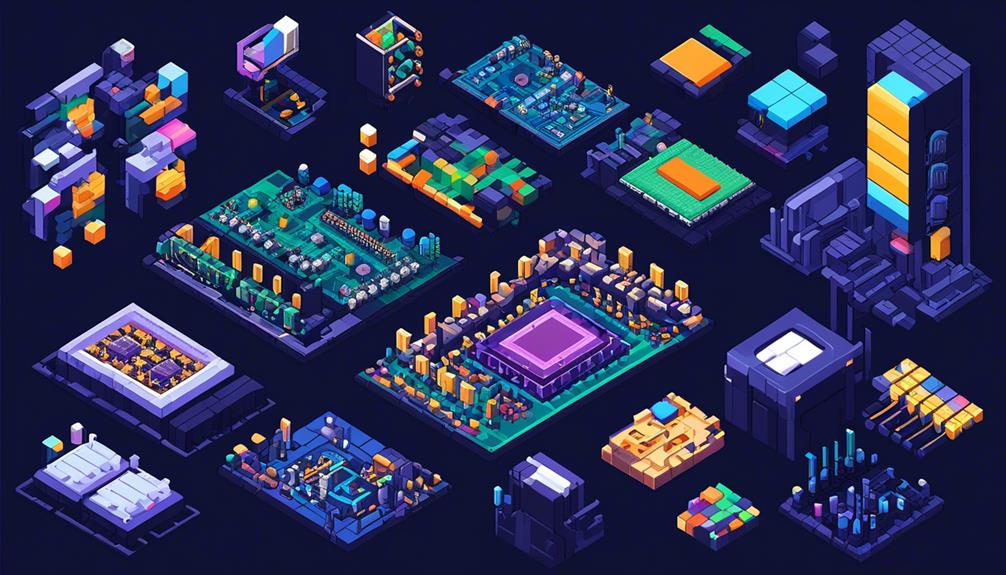
When selecting hardware components for edge computing infrastructure, it is crucial to carefully consider specific requirements such as low power consumption, ruggedized designs, and high performance and scalability. These components form the foundation of building edge computing systems that can efficiently process and analyze data at the network edge.
One important consideration when choosing hardware components for edge computing is the need for low power consumption. Edge computing systems are often deployed in remote locations where power availability may be limited. Therefore, selecting energy-efficient components can help reduce operational costs and ensure uninterrupted operation.
Another crucial requirement is the ruggedized design of hardware components. Edge computing infrastructure is typically deployed in harsh environments, such as manufacturing plants or outdoor installations. Therefore, the hardware components should be able to withstand extreme temperatures, humidity, vibrations, and other environmental factors to ensure reliable operation.
High performance and scalability are also key factors when selecting hardware components for edge computing. These systems often need to process and analyze large amounts of data in real-time, requiring components with sufficient processing power, memory, and storage capabilities. Additionally, the components should be scalable to accommodate future growth and increased workloads.
Furthermore, it is essential to choose hardware components that support secure deployment and communication. Data privacy and protection of sensitive information are critical in edge computing, where data is processed and stored closer to the data source. Hardware components with built-in security features and support for encryption protocols can help safeguard data and ensure secure communication between edge devices and the central infrastructure.
Networking Considerations for Edge Computing
In the realm of edge computing infrastructure, one must consider various networking considerations, including proximity to data sources, network connectivity, and scalability requirements. These considerations are crucial for ensuring efficient and effective data processing at the edge.
- Proximity to data sources: One of the key advantages of edge computing is its ability to process data closer to its source. This proximity reduces the latency and bandwidth requirements by minimizing the distance data needs to travel. To achieve this, edge computing infrastructure should be strategically located near the data sources, such as IoT devices or sensors, to enable faster data processing and real-time decision-making.
- Network Connectivity: Reliable and robust network connectivity is essential for edge computing infrastructure. The network should be capable of handling the increased traffic generated by edge devices and should provide low latency and high bandwidth connectivity. Additionally, edge computing infrastructure should have redundant network connections to ensure continuous operation even in the event of network failures.
- Scalability Requirements: Edge computing infrastructure should have the capability to scale both vertically and horizontally to meet the evolving demands of data processing at the edge. Vertical scalability involves increasing the resources, such as CPU and memory, of individual edge devices, while horizontal scalability involves adding more edge devices to distribute the workload. Scalability is essential to ensure that the edge infrastructure can handle the growing volume and complexity of data generated by various sources.
Power and Cooling Requirements
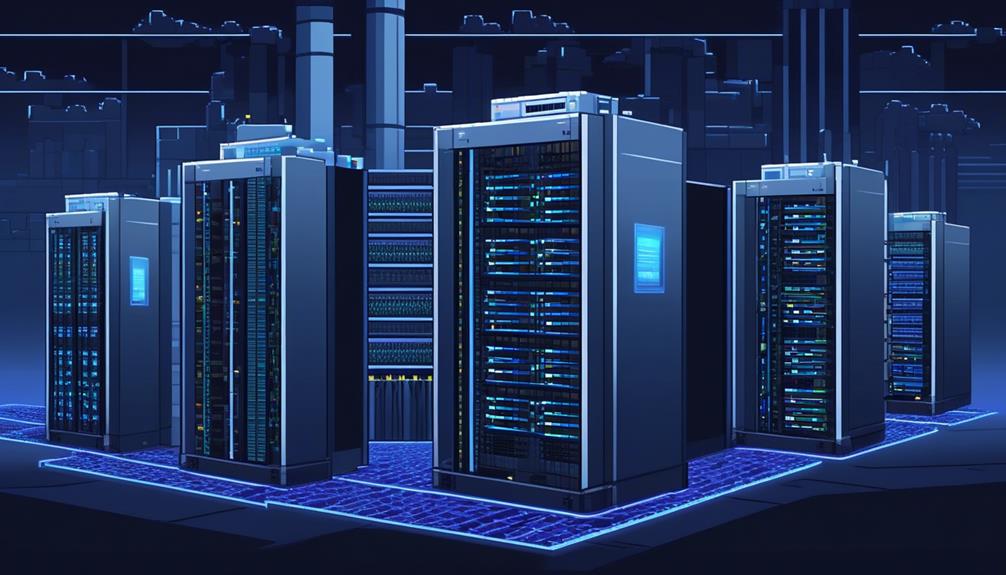
Efficient power supplies and effective cooling systems are crucial components of edge computing infrastructure, supporting continuous operations and ensuring optimal performance and reliability. As edge computing infrastructure becomes more prevalent, the demand for efficient power management and cooling solutions has increased.
Unlike traditional data centers, edge locations have unique power and cooling requirements that must be addressed to maintain ideal operating temperatures and minimize energy consumption.
One of the key challenges in edge computing infrastructure is the limited power availability in remote locations. Power sources may be unreliable or limited in capacity, requiring careful planning and optimization of power consumption. Edge computing infrastructure must be designed with efficient power supplies that can handle the specific power constraints and fluctuations of edge locations. This may involve the use of uninterruptible power supplies (UPS) or alternative power sources such as solar or wind energy.
Effective cooling systems are equally important in edge computing infrastructure. The compact nature of edge locations often means that space for cooling equipment is limited. Cooling solutions must be designed to effectively dissipate heat generated by edge computing equipment while maintaining a suitable temperature range. This may involve the use of specialized cooling techniques such as liquid cooling or innovative airflow management strategies.
Properly managing power and cooling requirements is vital for ensuring the longevity and stability of edge computing infrastructure. In addition to supporting continuous operations, efficient power management and cooling solutions can help reduce energy costs and minimize the environmental impact of edge computing deployments. By carefully considering the unique power and cooling demands of edge locations, organizations can optimize the performance and reliability of their edge computing infrastructure.
Storage Options for Edge Computing Infrastructure
When considering storage options for edge computing infrastructure, organizations must weigh the benefits of local versus cloud storage.
Local storage provides low-latency access to data, making it suitable for applications that require real-time processing.
On the other hand, cloud storage offers scalability and flexibility, allowing organizations to easily expand their storage capacity as needed.
Additionally, efficient data management is crucial in edge computing environments to ensure optimal performance and minimize data transfer costs.
Local Versus Cloud Storage
Local storage and cloud storage are two storage options for edge computing infrastructure, each with its own benefits and considerations.
Here are three key points to consider when choosing between local and cloud storage for edge computing:
- Latency and response time:
- Local storage allows data to be stored and processed near the source, reducing latency and improving response times.
- This is particularly important for applications requiring real-time processing, such as autonomous vehicles or industrial automation.
- Scalability and accessibility:
- Cloud storage offers scalability and accessibility advantages.
- Data is stored in remote data centers, allowing for easy access and the ability to handle large data volumes.
- This is beneficial for applications that require the ability to scale or handle big data analytics.
- Security and compliance:
- Both local and cloud storage options should be evaluated based on factors such as data security, network connectivity, and regulatory compliance.
- Local storage may offer better control over data security, while cloud storage providers often have robust security measures in place.
Scalability and Data Management
To effectively address the scalability and data management challenges in edge computing infrastructure, it is crucial to select storage options that can efficiently handle and process data at the edge while ensuring data integrity, availability, and security. The storage solutions for edge computing must be flexible and scalable to accommodate varying data loads. They should also support real-time data processing and analysis, seamlessly integrate with edge devices and applications, and optimize performance. To provide a comprehensive overview, let's examine the various storage options available for edge computing infrastructure in the table below:
| Storage Option | Description | Advantages |
|---|---|---|
| Local Storage | Storing data directly on edge devices or gateways | Low latency, offline access, reduced network traffic |
| Cloud Storage | Storing data on remote servers accessed through the internet | Unlimited storage capacity, centralized management |
| Fog Storage | Storing data on intermediate nodes between edge devices and the cloud | Low latency, reduced network traffic, intelligent data filtering |
| Hybrid Storage | Combination of local, cloud, and fog storage options | Flexibility, scalability, tailored to specific use cases |
| Edge-Cloud Storage | Storing frequently accessed data locally and less frequently accessed data on the cloud | Low latency, reduced bandwidth usage, cost optimization |
These storage options provide organizations with the flexibility and scalability needed to handle the increasing data volumes generated by IoT deployments and enable efficient data management at the edge.
Scalability and Capacity Planning
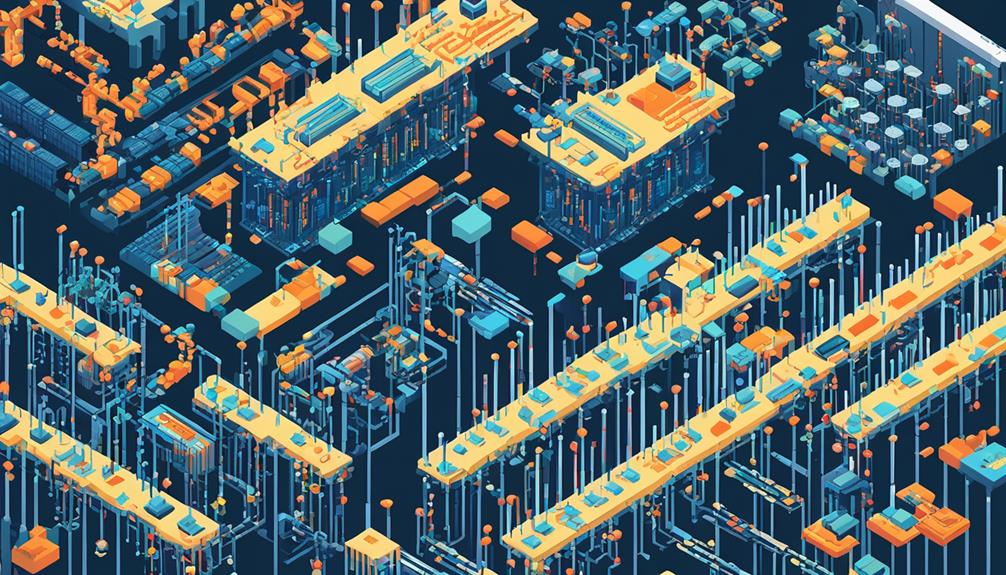
Scalability and capacity planning in edge computing infrastructure involve strategically assessing resource needs to accommodate future growth and ensure optimal performance and cost efficiency. This planning is crucial for organizations to effectively scale their infrastructure as demand increases while minimizing operational costs.
Here are three key aspects to consider in scalability and capacity planning for edge computing infrastructure:
- Workload analysis: To determine the resource requirements, it is essential to analyze the workload patterns and identify potential areas of growth. This analysis helps in understanding the peak load periods and the expected increase in workloads over time. By understanding these patterns, organizations can allocate resources accordingly and ensure that the infrastructure can handle the increased demands.
- Resource allocation: Scalability planning involves determining how additional resources, such as computing power, storage, and networking capabilities, will be provisioned to meet growing demands. Organizations need to consider factors like performance, response times, and fault tolerance while allocating resources. This ensures that service levels are maintained even during peak periods and that the infrastructure can handle sudden spikes in demand.
- Performance monitoring and optimization: Capacity planning involves evaluating resource utilization and performance to optimize the infrastructure for cost efficiency. By monitoring key metrics like CPU usage, memory utilization, and network bandwidth, organizations can identify areas of inefficiency and optimize resource allocation. This helps in avoiding overprovisioning or underutilization of resources, ultimately reducing costs and improving overall system performance.
Security Measures for Edge Computing
As organizations strategically assess resource needs to accommodate future growth and ensure optimal performance and cost efficiency in edge computing infrastructure, security measures play a critical role in ensuring the protection of sensitive data and data privacy. Edge computing, with its distributed architecture and computing model, introduces new security challenges that require specific measures to mitigate risks and safeguard critical assets.
To address these challenges, security measures for edge computing include promoting standards-based platform software and security through projects like Project Cassini. This initiative aims to establish a secure and trustworthy foundation for edge computing by defining a common set of hardware and software requirements. By adhering to these standards, organizations can ensure the integrity and security of their edge architecture.
Secure deployment of cloud-native stacks at the infrastructure edge is another key security measure for edge computing. This approach enables organizations to leverage the benefits of cloud-native technologies while maintaining a strong security posture. By implementing secure deployment practices, organizations can minimize the attack surface and protect against potential vulnerabilities.
Near-seamless onboarding and management of cloud-native stacks also enable enhanced security measures for edge computing. By automating the provisioning and configuration of edge devices, organizations can ensure consistent security policies and reduce the risk of misconfigurations or human errors.
Furthermore, enabling secure communication and authentication in edge deployments is crucial for maintaining data privacy and preventing unauthorized access. Implementing robust encryption protocols and authentication mechanisms ensures that data transmitted between edge devices and the cloud remains confidential and protected from interception.
Overall, security measures for edge computing are essential to protect sensitive data and ensure data privacy in this distributed computing model. By adopting standards-based software, secure deployment practices, and robust authentication mechanisms, organizations can mitigate risks and confidently embrace the benefits of edge computing infrastructure.
| Security Measures for Edge Computing | Description |
|---|---|
| Promoting standards-based platform software and security | Establishing common requirements for hardware and software to ensure a secure and trustworthy foundation for edge computing. |
| Secure deployment of cloud-native stacks at the infrastructure edge | Leveraging cloud-native technologies while maintaining a strong security posture through secure deployment practices. |
| Near-seamless onboarding and management of cloud-native stacks | Automating provisioning and configuration processes to ensure consistent security policies and reduce the risk of misconfigurations. |
| Enabling secure communication and authentication in edge deployments | Implementing encryption protocols and authentication mechanisms to protect data confidentiality and prevent unauthorized access. |
Edge Data Processing Techniques
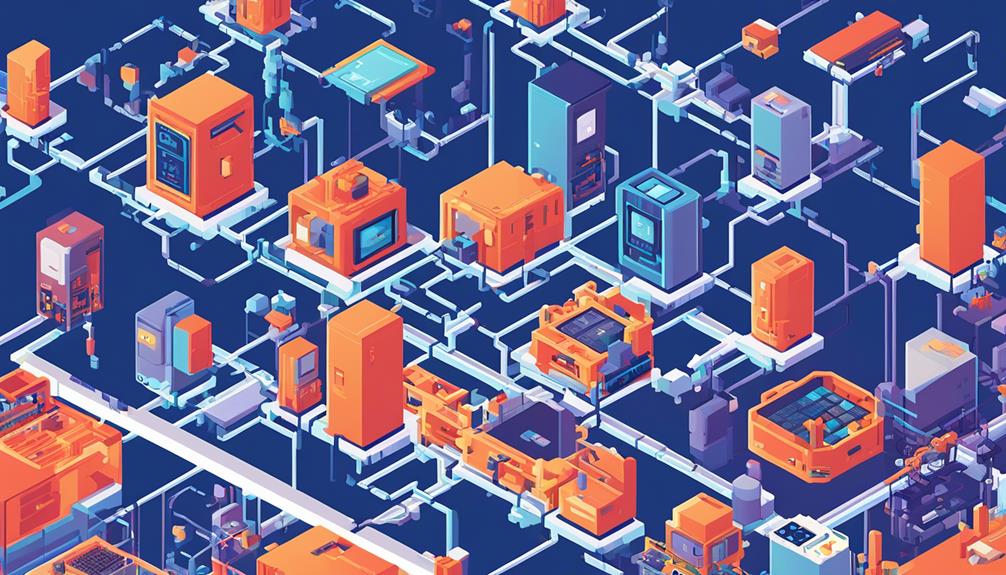
Edge data processing techniques involve handling and analyzing data closer to the source of generation, which enables reduced latency, improved real-time business insights, and supports a wide range of applications. These techniques leverage edge computing infrastructure to efficiently process data and make timely decisions.
Here are three key edge data processing techniques:
- Secure deployment of cloud-native stacks: Edge data processing requires the deployment of cloud-native stacks that ensure the security and integrity of the data being processed. This involves implementing robust authentication, encryption, and access control mechanisms to protect sensitive information. By securely deploying cloud-native stacks at the edge, organizations can confidently process data while maintaining the privacy and confidentiality of their operations.
- Addressing security concerns: Edge data processing techniques also focus on addressing security concerns associated with the use of edge computing resources. This includes implementing measures such as intrusion detection systems, firewalls, and encryption protocols to safeguard against unauthorized access and data breaches. By proactively addressing security concerns, organizations can ensure the reliability and trustworthiness of their edge computing infrastructure.
- Enabling efficient transportation systems and infrastructure in smart cities: Edge data processing plays a crucial role in enabling efficient transportation systems and infrastructure in smart cities. By processing data from sensors and IoT devices in real-time, edge computing can optimize traffic flow, monitor infrastructure conditions, and enable predictive maintenance. This improves the overall efficiency and safety of transportation systems, leading to enhanced user experience and reduced congestion.
Edge Computing Architecture Design
With a focus on optimizing computing and storage resources at peripheral processing points, edge computing architecture design aims to enhance efficiency and enable implementation in diverse locations. This design encompasses several key elements, including moving infrastructure components to edge locations, deploying edge IoT architecture for complex IoT networks, and orchestrating edge infrastructure to bring compute, storage, and application hosting closer to the data source.
To provide a visual representation of the components involved in edge computing architecture design, the following table illustrates the main considerations:
| Edge Computing Architecture Design |
|---|
| Moving infrastructure components to edge locations |
| Deploying edge IoT architecture for complex IoT networks |
| Orchestrating edge infrastructure to bring compute, storage, and application hosting closer to the data source |
| Building edge infrastructure using cloud provider services |
| Choosing the right database for edge computing |
| Enabling data processing at each layer |
| Leveraging edge exposure for reduced latency and better access to capabilities |
| Addressing challenges and opportunities, such as enabling the full promise of 5G |
| Factors for choosing edge technology based on application and use |
| Supporting the partner ecosystem through operational models and access to data and analytics |
| Promoting standards-based approaches to platform software and security through initiatives like Project Cassini |
| Addressing security concerns in edge computing environments |
| Supporting multiple industry use cases |
| Driving ecosystem-driven edge reference implementations |
Edge computing architecture design plays a crucial role in the development of edge computing infrastructure. It enables the efficient utilization of computing and storage resources at peripheral processing points, reducing the traffic to the central data center. By bringing compute, storage, and application hosting closer to the data source, it allows for faster data processing and reduced latency. Additionally, the design incorporates considerations for building edge infrastructure using cloud provider services, choosing the appropriate database, and enabling data processing at each layer. These efforts aim to enhance the overall efficiency and effectiveness of edge computing services.
Deploying Edge Computing Nodes
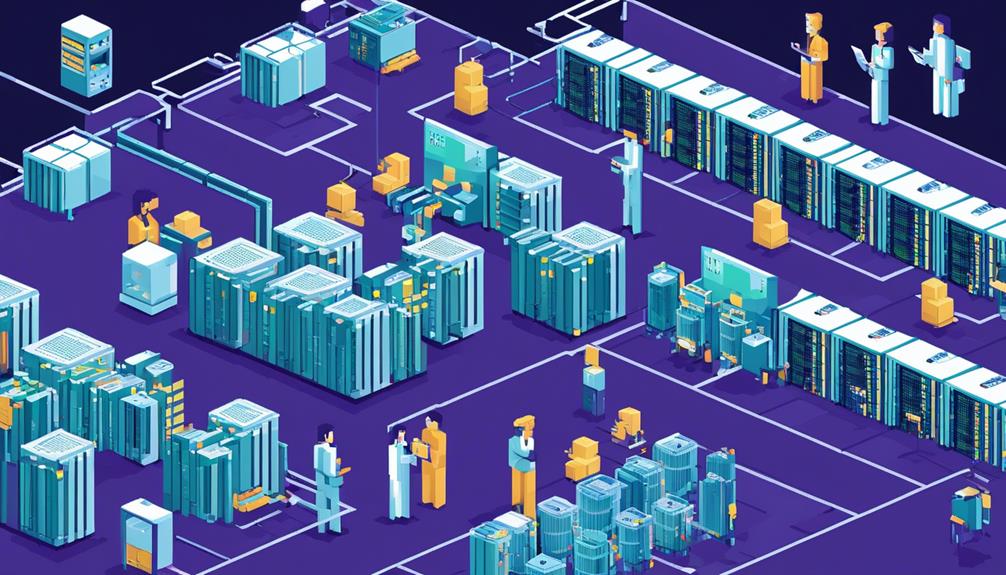
The deployment of Edge Computing Nodes involves the secure implementation of cloud-native stacks at the infrastructure edge, ensuring the protection of sensitive data and maintaining data privacy. This process is crucial in building an edge computing infrastructure that enables various applications and industries to leverage the benefits of edge computing.
Here are three key aspects to consider when deploying edge computing nodes:
- Security and Data Privacy: Deploying edge computing nodes requires a robust security framework to protect sensitive data and ensure data privacy. This includes implementing secure communication protocols, encryption mechanisms, and access controls. It is essential to have a comprehensive security strategy that addresses potential vulnerabilities and threats at the edge, such as physical tampering, unauthorized access, and data breaches. By prioritizing security and data privacy, organizations can build trust with their customers and partners.
- Scalability and Flexibility: Building an edge computing infrastructure requires deploying nodes that can scale and adapt to changing demands. Edge deployment should be flexible enough to accommodate the growing volume of data and diverse workloads. It involves selecting hardware and software components that can be easily upgraded or replaced as the edge computing ecosystem evolves. Scalable edge nodes enable efficient resource allocation, load balancing, and seamless integration with existing IT systems.
- Network Connectivity and Latency: Edge computing relies on low-latency network connections to deliver real-time insights and responses. When deploying edge computing nodes, it is crucial to consider network connectivity options and ensure reliable and high-speed connections. This may involve leveraging technologies like 5G or deploying edge nodes closer to the source of data generation. By minimizing latency, organizations can unlock the full potential of edge computing, enabling faster decision-making, improved user experiences, and enhanced operational efficiency.
Monitoring and Management of Edge Infrastructure
Monitoring and management of the infrastructure edge involves implementing a comprehensive system to ensure the secure deployment and protection of sensitive data within cloud-native stacks. This crucial aspect of edge computing infrastructure ensures that the edge nodes are operating efficiently, securely, and reliably.
To effectively monitor and manage edge infrastructure, organizations need to employ robust tools and techniques that enable real-time monitoring, proactive management, and predictive analytics. These tools should provide insights into the performance, health, and security of edge nodes, allowing for timely detection and resolution of issues. Additionally, they should support centralized management, configuration, and deployment of edge resources, ensuring consistency and scalability across the infrastructure.
To illustrate the importance of monitoring and management in edge infrastructure, consider the following table:
| Key Benefits | Use Cases |
|---|---|
| Efficient Operations | Smart Cities |
| Enhanced Security | Industry 4.0 |
| Real-time Monitoring | Autonomous Vehicles |
| Predictive Maintenance | Telecommunications |
| Scalable Deployment | Retail |
Efficient operations are achieved through real-time monitoring, enabling organizations to optimize resource utilization and respond promptly to changing demands. Enhanced security ensures that sensitive data remains protected against potential threats.
Real-time monitoring and predictive maintenance empower organizations in Industry 4.0 to achieve optimal operational control and prevent costly downtime. In smart cities, monitoring edge infrastructure enables the deployment of sensor networks for data analysis, improving urban planning and resource management.
Monitoring and management are also crucial in the context of autonomous vehicles, enabling real-time tracking, diagnostics, and remote updates. In the telecommunications industry, these practices support the management of edge devices and enable efficient network management. Lastly, the retail sector benefits from scalable deployment, allowing for the rapid expansion of edge infrastructure to support various retail use cases.
Edge Computing and Iot Integration

Edge computing and IoT integration play a critical role in enabling organizations to harness the power of real-time business insights and actionable answers by bringing storage and compute resources closer to the source of data generation. This integration allows for efficient data processing and analysis at the edge, reducing the latency and bandwidth requirements associated with transmitting large volumes of data to the cloud for processing.
Here are three key aspects of edge computing and IoT integration:
- Near-Seamless Experience: Edge computing enables a near-seamless experience for onboarding and managing cloud-native stacks. This integration supports multiple use cases across industries, such as smart cities, autonomous vehicles, and industrial automation. By deploying edge computing infrastructure, organizations can leverage the power of IoT devices and sensors to collect massive amounts of data, process it locally, and generate real-time insights.
- Efficient Traffic Routing: Edge computing allows for efficient traffic routing in the operators' network. By processing data closer to the source, organizations can reduce latency and improve user experience. This is particularly important for applications that require real-time responsiveness, such as remote monitoring, video analytics, and predictive maintenance.
- Security and Data Privacy: Secure deployment of cloud-native stacks at the infrastructure edge addresses security concerns in edge computing environments and ensures data privacy. By processing sensitive data locally rather than sending it to the cloud, organizations can mitigate the risk of unauthorized access and data breaches. This is especially crucial in industries where data privacy regulations are stringent, such as healthcare and finance.
Edge Computing for Real-Time Analytics
Edge computing for real-time analytics enables businesses to process data at the edge of the network, allowing for immediate insights and actionable answers. By bringing storage and compute resources closer to the data source, it overcomes bandwidth limitations and reduces latency associated with centralized data centers.
This approach empowers businesses with instant data leveraging, boosting productivity, improving processes, and supporting real-time monitoring and predictive maintenance.
Real-Time Data Processing
Real-time data processing in edge computing facilitates immediate analysis and action on data as it is generated at the network edge, enabling rapid decision-making based on real-time insights. This capability is crucial in today's fast-paced world, where real-time responses are essential for various industry use cases.
Here are three key aspects of real-time data processing in edge computing:
- Reduced latency: By processing data at the edge, near the IoT endpoints where it is generated, edge computing minimizes the time it takes for data to travel to centralized data centers and back. This significantly reduces latency, enabling real-time responses and enhancing the overall user experience.
- Bandwidth optimization: Edge computing infrastructure allows for localized processing, eliminating the need to transmit large volumes of data to centralized servers. This reduces bandwidth usage, ensuring efficient data transmission and optimizing network resources.
- Improved reliability: Real-time data processing at the edge enhances the reliability of critical applications by reducing dependence on cloud or centralized infrastructure. In scenarios where network connectivity may be intermittent or unreliable, edge computing ensures continuous operation and real-time insights even in challenging environments.
Analytical Insights at Edge
With the growing demand for immediate insights and data processing, businesses are leveraging edge computing infrastructure to enable real-time analytics at the network edge. This approach allows organizations to analyze data at the edge of the network, closer to the source of data generation, minimizing latency and optimizing data processing for time-sensitive applications. Real-time analytics at the edge empowers various industries by enabling faster and more informed decision-making.
To illustrate the benefits of analytical insights at the edge, consider the following table:
| Benefits of Analytical Insights at Edge |
|---|
| Immediate insights and data processing |
| Minimal latency |
| Optimized data processing |
| Faster and more informed decision-making |
Edge Computing for Latency-Sensitive Applications
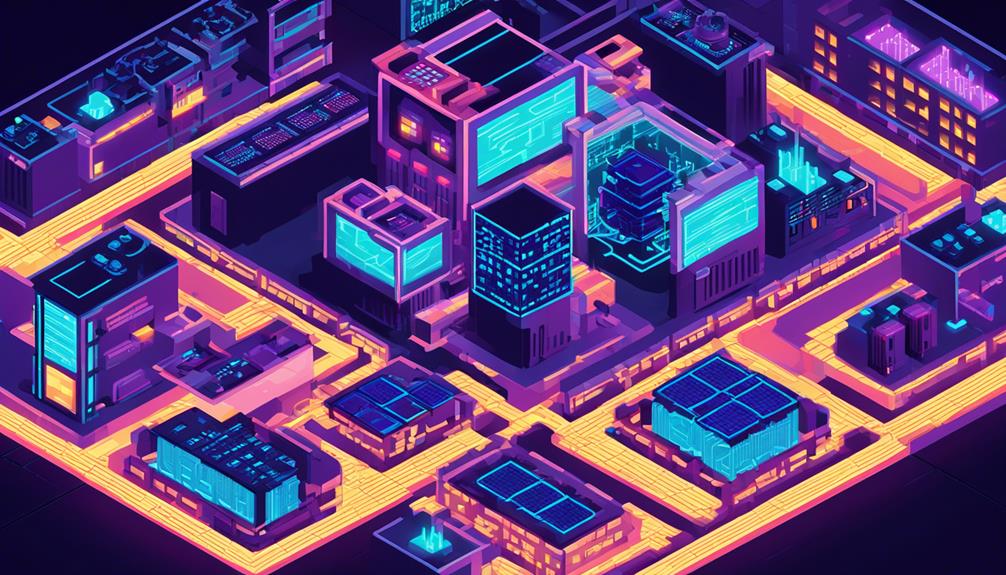
In the realm of computing infrastructure, the integration of edge computing has emerged as a critical solution for reducing latency in applications that demand real-time data processing. By bringing processing power closer to the data source, edge computing minimizes delays in data transmission and analysis.
Here are three key aspects of edge computing for latency-sensitive applications:
- Optimized Performance: Edge computing enhances the performance of applications that require real-time data processing, such as IoT devices, autonomous vehicles, and industrial automation. The proximity of the edge infrastructure to these devices enables faster data processing and analysis, resulting in improved decision-making and response times. This is particularly important in time-critical scenarios where immediate action is necessary.
- Reduced Latency: Edge computing reduces the distance data needs to travel by processing and analyzing data at the edge of the network. This reduction in distance significantly decreases latency, enabling faster data retrieval, processing, and decision-making. As a result, latency-sensitive applications can operate with minimal delays, ensuring a seamless user experience and enabling real-time interactions.
- Industry Advantages: Edge computing offers significant advantages in various industries where low latency is crucial. For example, in finance, real-time analysis of market data is essential for making timely investment decisions. In gaming, low latency is critical for providing immersive and responsive gameplay experiences. In healthcare, edge computing can support real-time monitoring and analysis of patient data, enabling rapid interventions and improved patient outcomes.
Edge Computing for Disaster Recovery
Edge computing plays a crucial role in disaster recovery by providing a resilient and distributed infrastructure for quick access to critical data and applications, ensuring business continuity in the face of catastrophic events. In a disaster scenario, traditional centralized data centers may become inaccessible, leading to significant downtime and data loss. However, with edge computing, resources are decentralized, reducing the risk of a single point of failure and enabling continuous operations even in disaster-affected areas.
By processing data at the edge, edge computing minimizes latency and enables real-time decision-making in disaster recovery scenarios. This is particularly important as time is of the essence during such events. With edge computing, critical data and applications can be accessed and processed locally, without the need to rely on distant data centers. This not only reduces latency but also ensures that essential services can continue to function without interruptions.
Furthermore, edge computing provides a resilient infrastructure for disaster recovery by offering a distributed backup and recovery approach. Data replication across multiple edge devices and locations allows for redundancy, safeguarding against catastrophic events that may result in the loss of data. In the event of a disaster, edge computing enables the rapid restoration of services from the nearest available edge device, minimizing downtime and ensuring business continuity.
Future Trends in Edge Computing Infrastructure

The evolving landscape of edge computing infrastructure presents promising future trends that will shape the way businesses and industries leverage this technology for improved efficiency, security, and productivity. Here are three key trends to watch out for:
- Increased Adoption of Edge Computing Infrastructure:
As more organizations recognize the benefits of deploying computing resources at the edge, we can expect a significant increase in the adoption of edge computing infrastructure. This trend will be driven by the need for faster data processing, reduced latency, and improved network reliability. Service providers will play a crucial role in enabling this shift by offering edge computing services and solutions tailored to specific industry requirements.
- Integration of Artificial Intelligence and Machine Learning:
Edge computing infrastructure will increasingly incorporate artificial intelligence (AI) and machine learning (ML) capabilities to enable real-time data analysis and decision-making at the edge. By deploying AI and ML algorithms directly on edge devices, organizations can process and analyze data locally, reducing the need for data transmission to centralized cloud servers. This integration will enhance the speed, efficiency, and accuracy of edge-based analytics, enabling businesses to derive actionable insights in real-time.
- Enhanced Security and Privacy Measures:
With the proliferation of edge computing infrastructure, ensuring robust security and privacy measures will be a top priority for organizations. Future trends in edge computing infrastructure will focus on implementing advanced security protocols, such as secure enclaves and encryption, to protect data at the edge. Additionally, privacy-enhancing technologies like federated learning and differential privacy will be leveraged to minimize data exposure while still enabling valuable insights to be generated. Service providers will need to offer comprehensive security solutions to address the unique challenges posed by edge computing deployments.
Frequently Asked Questions
What Is the Infrastructure of Edge Computing?
The infrastructure of edge computing refers to the network of hardware and software components that enable the processing and storage of data at the periphery of the network. This architecture brings compute resources closer to the data source, resulting in reduced latency and improved performance.
Edge computing technologies, such as edge servers and storage devices, are deployed strategically to ensure proximity to data sources. This infrastructure supports various edge computing use cases across industries, including real-time analytics, IoT applications, and AI inference.
However, building edge computing infrastructure also presents challenges related to connectivity, security, and scalability.
What Is the Basic Architecture of Edge Computing?
Edge computing architecture is a transformative approach that brings computing resources closer to the data source, enhancing efficiency, reducing latency, and enabling real-time data processing. This architecture is characterized by its ability to leverage local computing power, storage, and applications at the network periphery. By doing so, edge computing offers numerous benefits, including improved performance, enhanced security, and reduced bandwidth requirements.
However, it also presents challenges such as managing distributed infrastructure and ensuring seamless integration with existing systems. Use cases for edge computing span various industries, including manufacturing, retail, and healthcare, where low latency and real-time data analysis are critical.
Contrasting edge computing with cloud computing, the former provides localized data processing and storage, while the latter emphasizes centralized computing and scalability.
How Do You Implement Edge Computing?
To implement edge computing, organizations need to consider several factors.
Edge computing offers various benefits, such as real-time data processing and actionable insights at the edge, supporting use cases across industries like smart cities and Industry 4.0.
However, challenges like security concerns and ensuring data privacy need to be addressed.
Implementing edge computing involves leveraging technologies like Arm Neoverse processors and Arm Cortex IP to achieve leading performance and scalability.
What Are the Three Layers of Edge Computing?
Edge computing consists of three layers: the device layer, the edge or fog layer, and the cloud layer.
The device layer comprises IoT devices that generate data at the edge.
The edge or fog layer processes and analyzes data closer to its source, reducing latency and enabling real-time insights.
The cloud layer provides additional processing, storage, and analytics capabilities.
These layers work together to enable efficient and effective edge computing infrastructure, supporting a wide range of use cases across industries.

